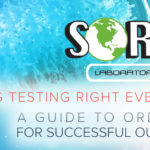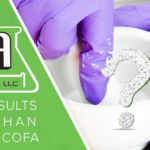There are many reasons why ISO 17025 accreditation is important for testing labs. Overall, ISO provides guidelines and acts as a roadmap for being a top-quality testing lab. This includes many requirements that must be met for every aspect of lab operation. Staff members must meet stringent training and proficiency standards to prove they are qualified to perform specific tests. Equipment installation qualification and calibration is monitored to ensure that testing is conducted with precision.
There are also procedures in place to investigate lab results that are outside the customer specifications. The out-of-specification (OOS) process is a commonly questioned procedure that customers seek to understand. Here’s some helpful information on understanding OOS results and how they are handled by the lab: First of all, we want to ensure that we have not made a mistake that would cause the OOS results. We look internally to discover if there is any type of lab error before reporting the results back to you, the customer. Next, we follow a checklist to verify several aspects of the testing process such as:
- Making sure that reagents used were not expired
- Check standards or reference materials were within passing criteria
- The submission form is reviewed to ensure that we had a clear understanding of the testing ordered and correct specifications were entered
- All calculations were correct
- Physical inspection of the sample to make sure there was no damage or mishandling
Once a thorough review is conducted and the analyst is questioned about possible issues with sample preparation or anything out of the ordinary during testing, then we can report the results.
When utilizing contract testing, sometimes there may be limited information given to the lab regarding the sample, especially when working with a blend. Providing the lab with a copy of the label, a list of co-ingredients in the blend or any additional information can be extremely helpful. For example, we may report that an enzyme blend has a low recovery of the lipase activity. After performing our internal OOS and reporting the low lipase results, the customer receives the report and calls to explain that the blend also has betaine HCL. This is valuable information because there is a known interference with acidic ingredients and the lipase activity testing method since this method is a pH-based titration. Having this information up-front would have given the lab understanding and key information in documenting the OOS results.
Working together as a team, we can better determine any legitimate reason for low results. Generally, we find that there may be a valid explanation for the OOS results and knowing more about the product up-front will save time and headaches in the long run. Working with a contract lab that has experience and is willing to help solve the mysteries of blended supplement products is invaluable. SORA Labs is here to help—call us today!










